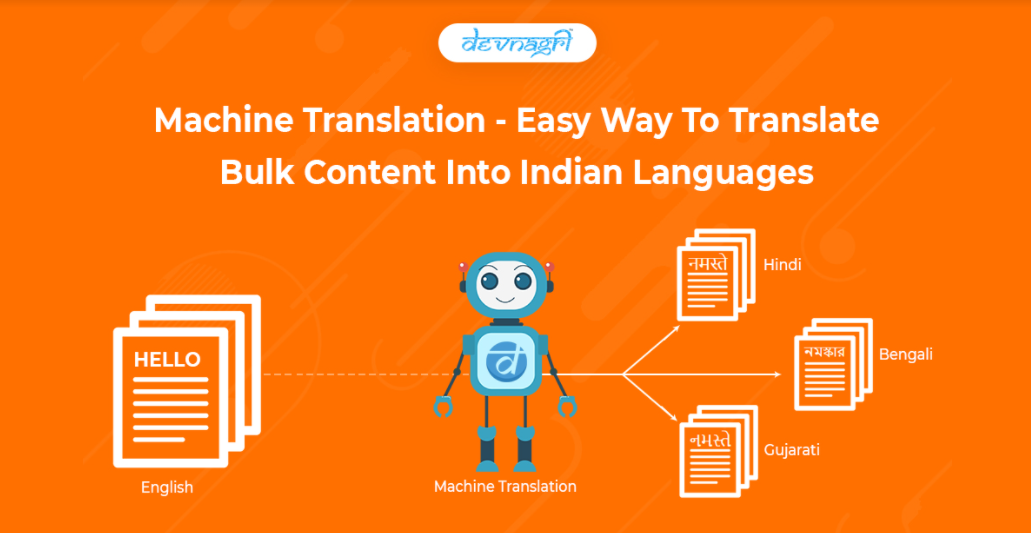
[:en]If you are acquainted with the language translation business, you have probably heard discussions about machine translation (MT). This technique utilizes computer software rather than human translators to interpret a text.
Machine translation is a technology developed to increase the speed with which texts may be translated while also lowering overall expenses. While it is unquestionably effective at these tasks, there are benefits to using this translation method.
According to the data available, a great amount of growth has been recorded in the Indian Language Internet User, from 42 Million to 234 million in just a span of 5 years.
Here are the main benefits of machine translation services:-
Improved Accuracy And Reliability
Machine translation is continually changing and improving, but several undeniable advantages have surfaced as the software improves in accuracy and reliability. While MT is not suitable for every translation circumstance and has yet to replace human translation, it speeds up translation and reduces translation expenses, provides faster translation
MT can translate papers in about half the time it takes a person, making it suitable for jobs that need a speedy response. Machine translation is a common alternative to human linguists when time is limited, and simply an approximation or summary translation is required.
Machine translation is handy when scanning a text to locate specific passages, sections, or pages to translate—having someone translate the whole manuscript when you need a few portions here is time-consuming and wasteful. MT may go straight to the components you need.
However, you nearly always sacrifice significant quality in exchange for quicker speeds and turnaround times. Although the translations will be understandable, they will not be exact or professional. A native speaker would find the translated text rough and, most likely, inconvenient to read if no post-editing was done.
Also Read: Translation API – Fast way for content translation In Indian languages
Cost Savings
The sooner you can complete translated work, the more time you devote to other corporate activities. Indirectly, machine translation may benefit the bottom line by increasing staff or customer communication.
Most notably, MT is less costly since a computer rather than a person performs it. Without the requirement for labour, the cost of every human work that is finally replaced by a machine drops drastically.
Also Read: Why Legal Translation Must Be Accurate? Find Reasons
Long-term Financial Investment
The more you put into translation engines and train them, the more accurate the translations they create will be. Your expenses will decrease over time as better and higher-quality translations are produced, and human editing becomes less necessary. As a result, machine translation may be the best long-term investment for your company’s future translation requirements. Also, It must be noted that as per a survey 9 out of 10 internet users in India will be Indian Language users.
Making The Most Of Machine Translation
You have probably heard compelling arguments in favor of either machine translation or human translation. Machine translation is less expensive and more efficient; however, human translation is more accurate and professional. Both arguments have validity.
Until machine translation evolves beyond its current capabilities, the ideal option for most businesses is a hybrid of machine and human translation. Where precision is not essential, save money where you can, but pay when necessary to deliver the right message and create a professional tone.
Also Read: Transliteration API – The Best Way To Display Your Products In Indian Languages
Repetitive Text
When it comes to repeated text, machine translation shines. Consider all of the automobile manuals that have been translated into various languages throughout the globe. They often include repetitive text, which a machine translation engine may be taught to interpret more quickly and cost-efficiently than any human translator could.
Companies increasingly depend on machine translation (MT) for an initial translation draft before hiring experienced linguists to revise and enhance the text for publishing. Using MT as a first stage reduces the time a linguist must spend on each translation assignment, lowering expenses. Still, human post-editing ensures that the final output is polished and professional.[:]





